The American hornbeam, Carpinus caroliniana, is a remarkable species native to the southeast United States that we can utilize for bonsai. It has a lot of characteristics going for it that would make it even more desirable to work with if it weren’t for some of its downfalls. I’ve worked with some lovely C. caroliniana, but they are not as forgiving as other species at the top of my lists, such as bald cypress, winged elm, and yaupon holly.
Before we get too far, I need to mention a few things and dive into the tree I’ll be presenting in this article. C. caroliniana is not as readily available as other species are. They are not grown and distributed commercially. Thought to have little to no value for large-scale nurseries to grow and is considered a nuisance in some ranges. So to work with this species, we will have to approach these trees a few different ways We can grow them from seed, start them from cuttings, or collect them locally. Since collecting trees from the wild is something we really like to do in the practice of bonsai, this is one way to obtain larger trunked C. caroliniana.
These unique challenges bring to light probably the worst quality of this tree, and why we are not seeing a lot of good American hornbeam bonsai is that they do not have a high CODIT. According to Xhigo (1977), “CODIT” refers to the compactization of decay in trees. A low CODIT means that C. caroliniana does not heal from wounds very well, and we should not make significant cuts on these trees. Unfortunately, the only way to get a “big” collected tree is to dig up and chop down a big trunked tree in the wild. Usually, this is not a big deal for a species like bald cypress, as you can successfully heal large wounds using proper techniques. C. caroliniana is pretty rare that a tree can recover a large wound to the point where it’s 100% sealed.
Side Note: You can get an excellent American hornbeam bonsai from a seedling or cutting. You could grow the tree and make cuts while it is still young. Healing wounds on a vigorous young tree is more manageable than on an older collected tree. Don’t let this article discourage you from growing them from seed, as some of the best deciduous bonsai in the world were grown from seed!
Here’s a C. caroliniana that was collected in 2019:
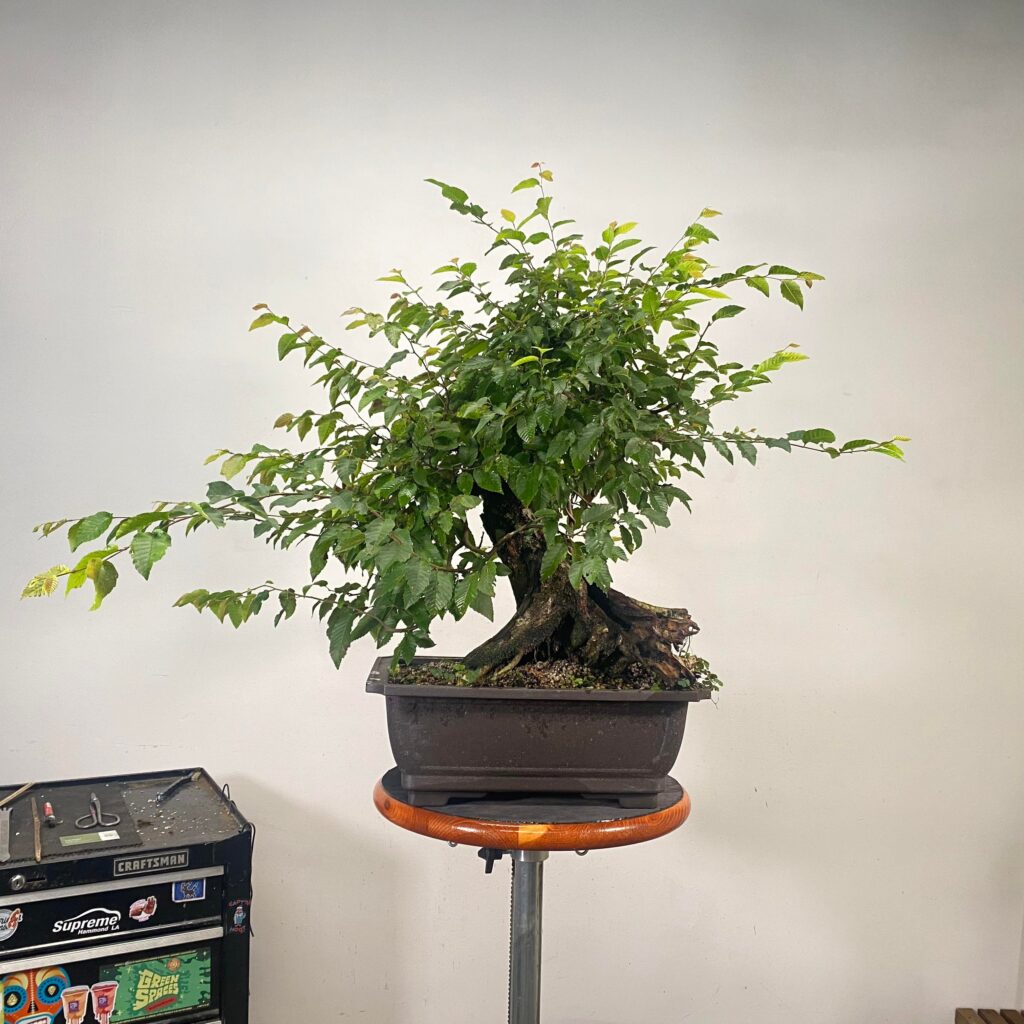
I almost gave up on this tree a little while back during the repotting season this year. The large chunk of deadwood on the right side of the pot is actually what is left of the useable nebari and one of the main reasons the tree was collected. The tree already had damage on the lower part of its trunk where a deer possibly sharpened its antlers, and then we dug the tree up and chopped it down. This damage didn’t jive with the tree very well, considering it had a partly rotted section between the big roots and the top. Whenever you cut off the live vein to a heavy supplying root on C. caroliniana, the rot will sever the vein altogether. These trees have it in their genetics to die back to the next available bud and try to regrow. Why?
Carpinus caroliniana is an understory tree. There are four layers to the heavily wooded southeast plains, as with most forest environments: the emergent layer, the canopy layer, the understory layer, and the forest floor. Understory trees tend to be crushed by larger trees either by storm damage or the more giant trees reaching the end of their natural life span. Therefore, when an understory tree is destroyed or damaged, the tree should give up on the damaged section and grow lower. This lower regrowth could snake its way out from under and develop into a functional tree again.
So that’s what this collected C. caroliniana did. But unfortunately, it took immense damage and died back naturally to the next available bud on the trunk. So I had to regrow the entire tree off that section and create a deadwood feature out of the stump.
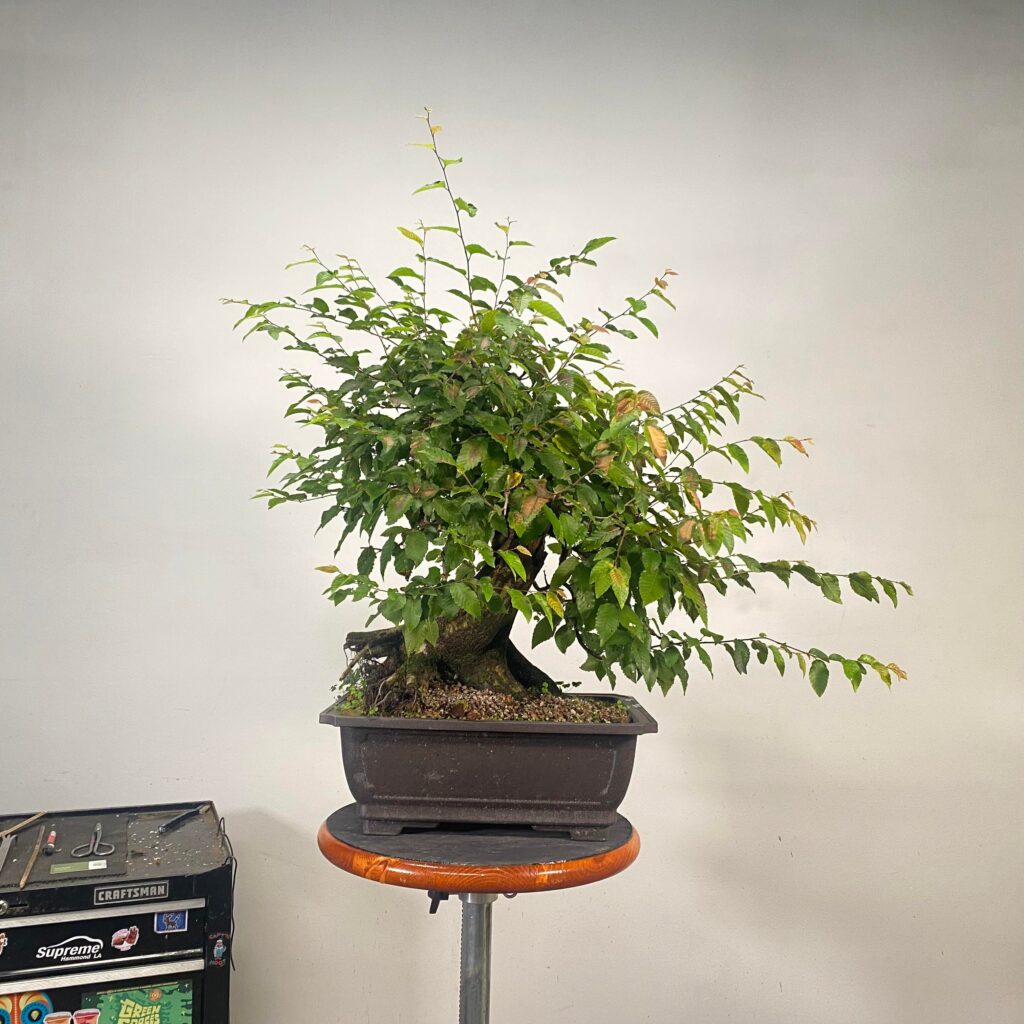
Let’s take a look at the backside of the tree, which, now that I’m looking at it from this angle, I think will be a better font. I’d like to thank my friend Mark for changing the potting angle of this tree in an attempt to save it because it has opened up a new possibility for this tree.
I will trim the tree back to a silhouette to see what it has to offer.
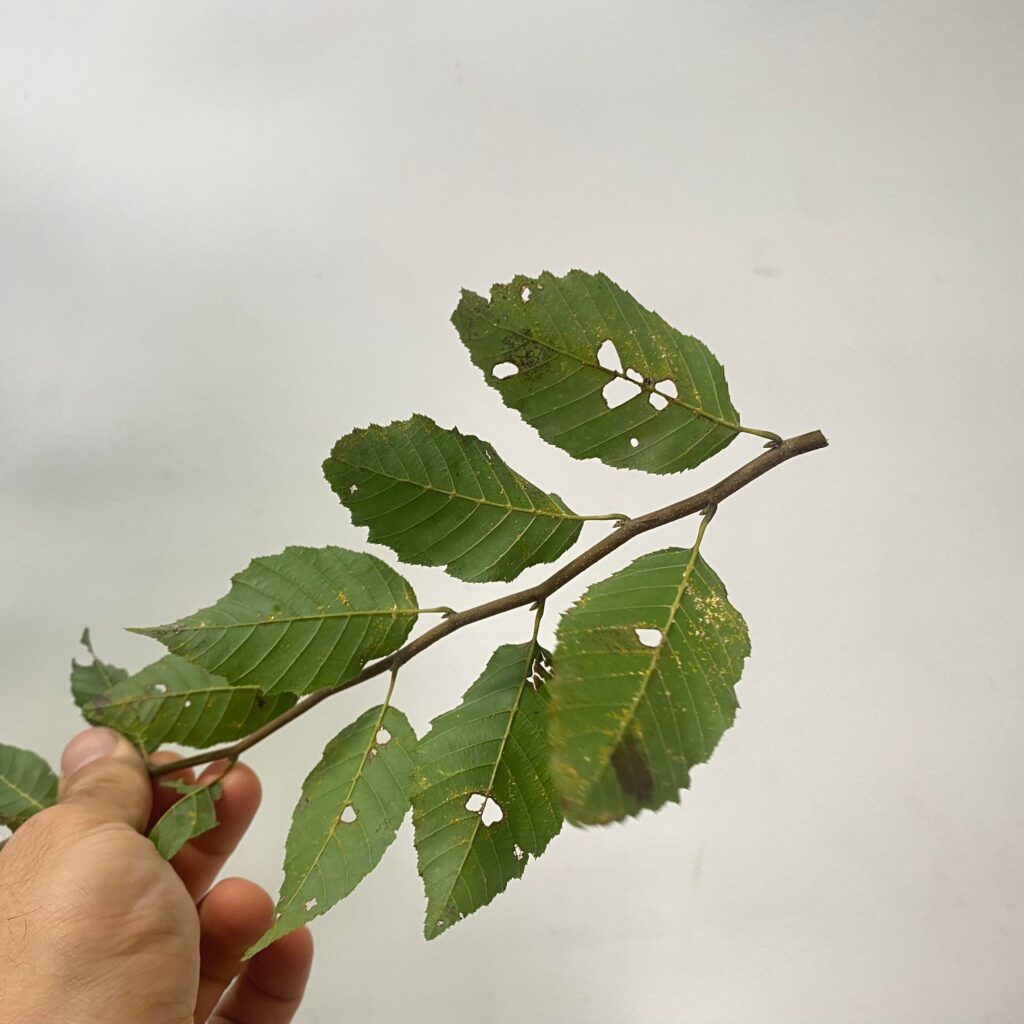
I found this infected leaf on one of the cuttings off of the tree. The funny thing about this infection is that I couldn’t find any information about it online, and I ended up contacting the LSU Ag department about it a little while back. They told me this isn’t a well-researched disease because C. caroliniana isn’t grown commercially. Maybe I kind of discovered a new American hornbeam-specific disease. One that is native to my part of southeast Louisiana. I don’t know much more about the condition because LSU Ag hasn’t contacted me after, but I did find a solution. The answer is Benzovindiflupyr, a compound ingredient that neutralizes the disease. You do have to remove the dead leaves damaged by the spread from the soil surface, or the disease’s life cycle will start all over again. Benzovindiflupyr can be found in Mural, a commercial fungicide. Mural is very effective at battling other fungi and diseases around the nursery. You may be able to find other products with the compound ingredient in them, but Mural does the job for us here at the nursery.
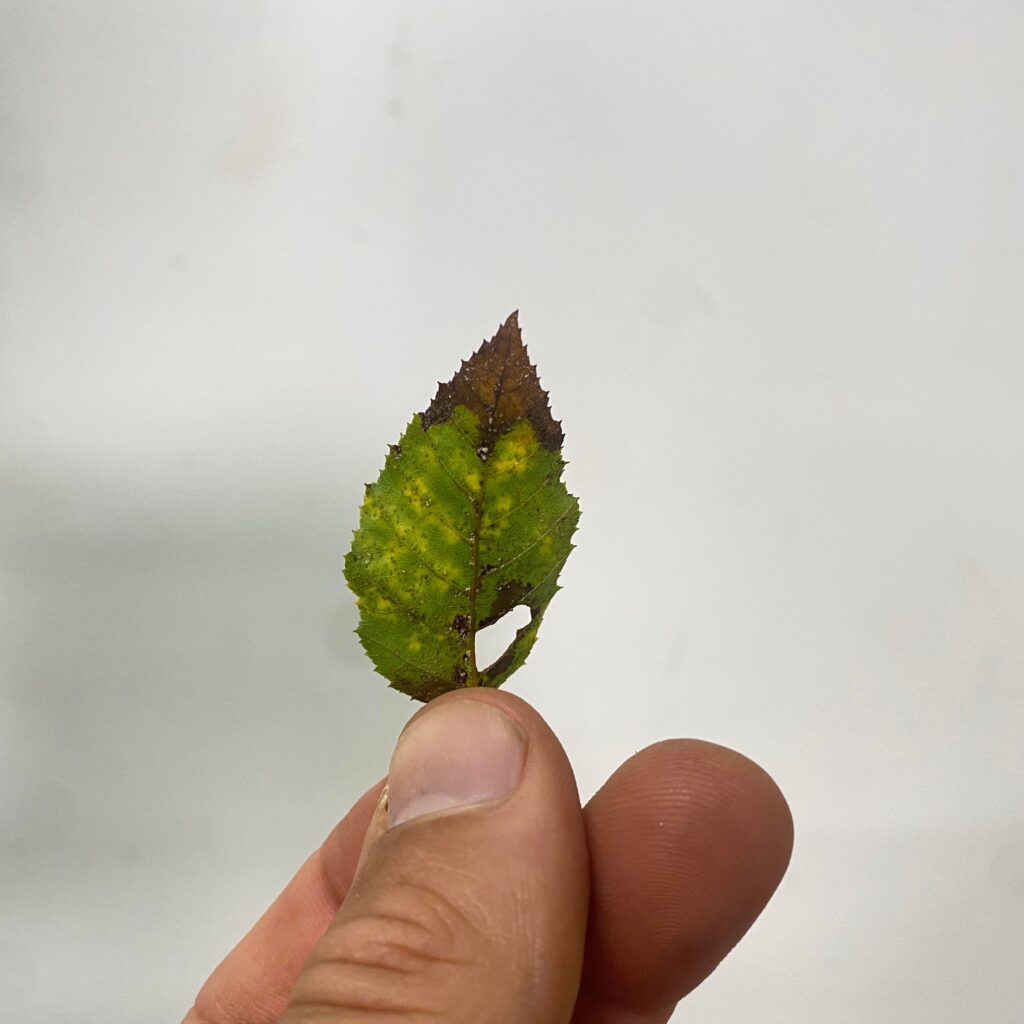
Here’s what the heavily damaged leaves from the native disease look like. They will brown up and fall off the tree once they reach this stage. The best way to combat this is to remove all the damaged leaves, give the tree a good spray down with the compound, and then keep it away from other infected hornbeams.
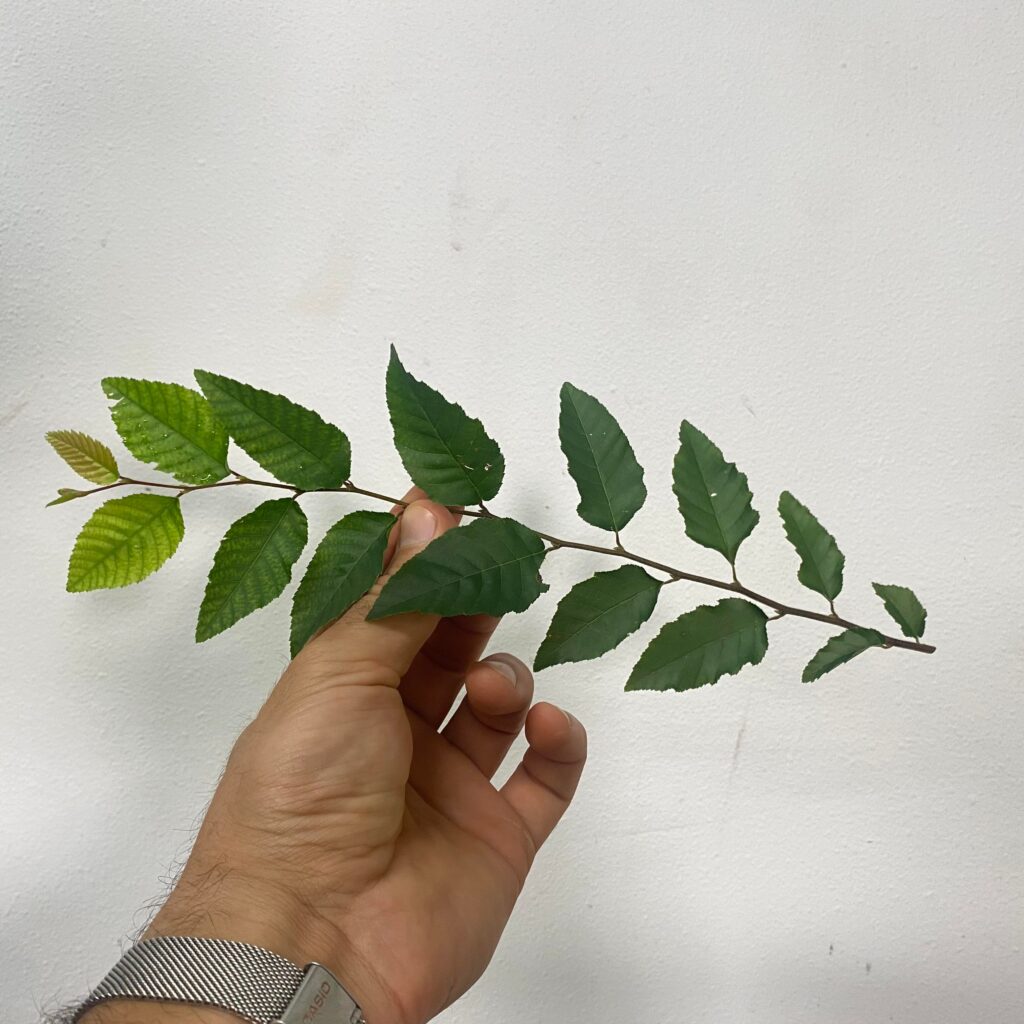
This is an example of a healthy shoot-off of the same tree. Look at how beautiful those dark green leaves are! The extending shoot is getting chlorotic. There is fertilizer on this tree, but it’s been so rainy here there hasn’t been enough air space for the roots to absorb the fertilizer and supply the new shoots adequately. This is a good and a bad thing. The good is that the tree is attempting to grow fresh, healthy shoots so quickly that we can’t seem to feed it fast enough. The bad is that the rainy season is hindering the tree’s uptake.
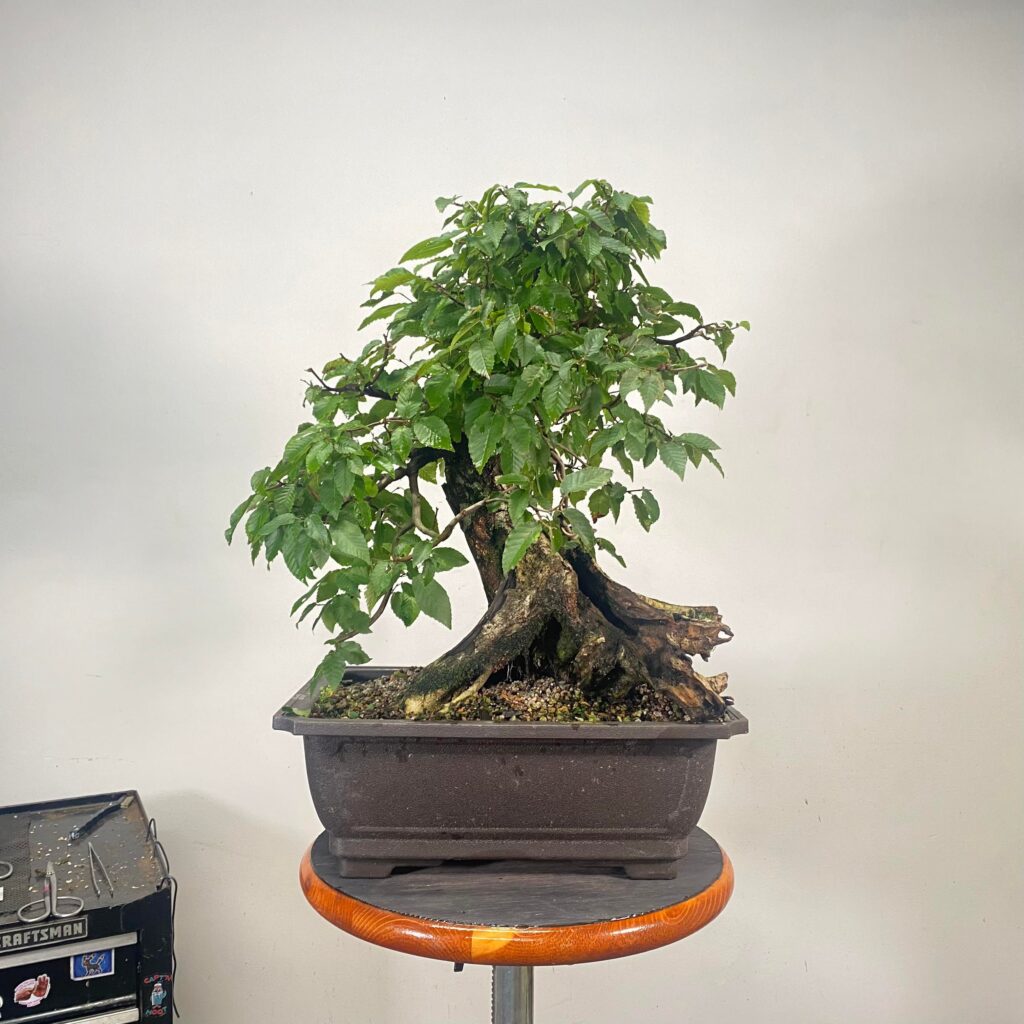
After trimming the tree back, I’m not too crazy about the “front” anymore. I always tell anyone working on a deciduous bonsai that they should never get overly set on where the front of the tree is. Our goal with deciduous design is to make them beautiful from all sides but use the front to best set the show.
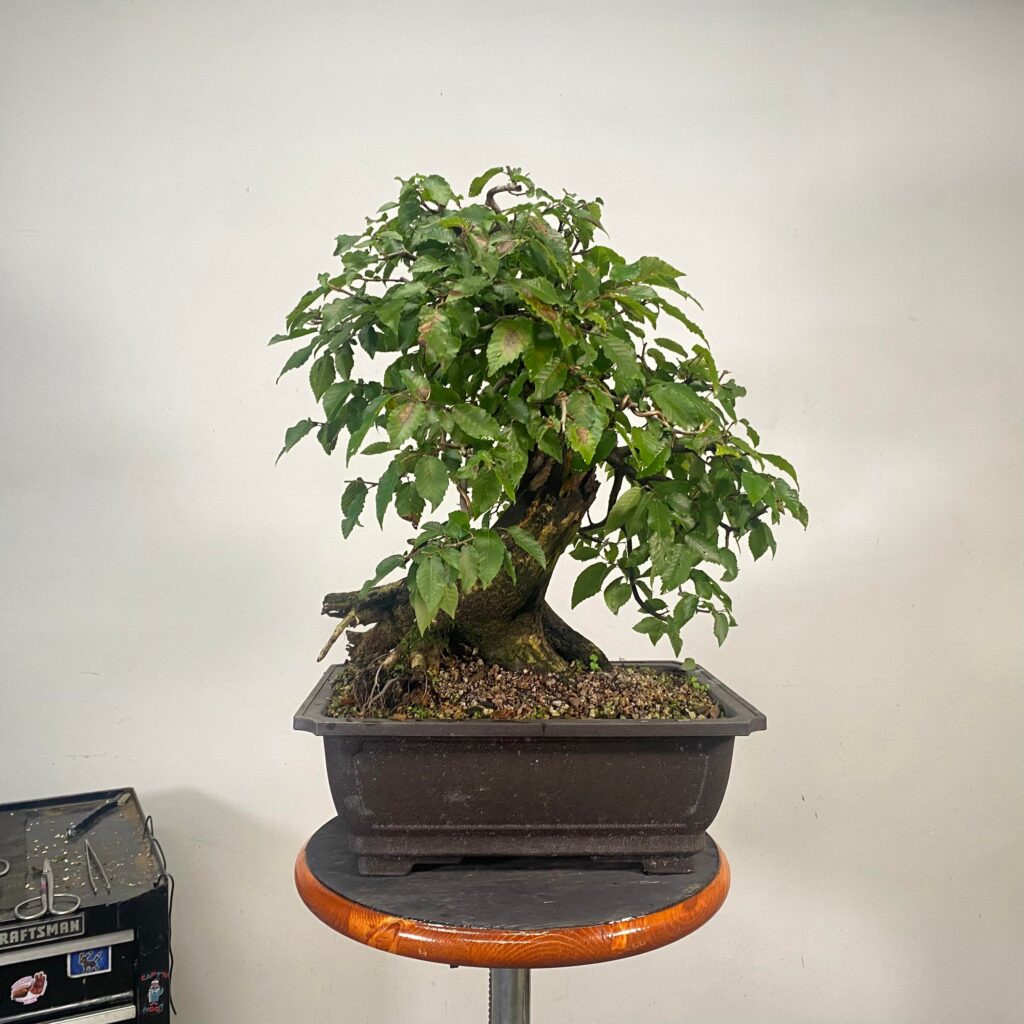
This is the same tree turned around, almost like a completely different tree. The deadwood isn’t the main feature as it is now in the back, peaking out. The line, the movement from the base guiding our eyes through the tree, is now more pronounced from this view. I think there might be more to this possible front. I will take some of the weight off the right side and see if I can bring the feeling of tension to the design.
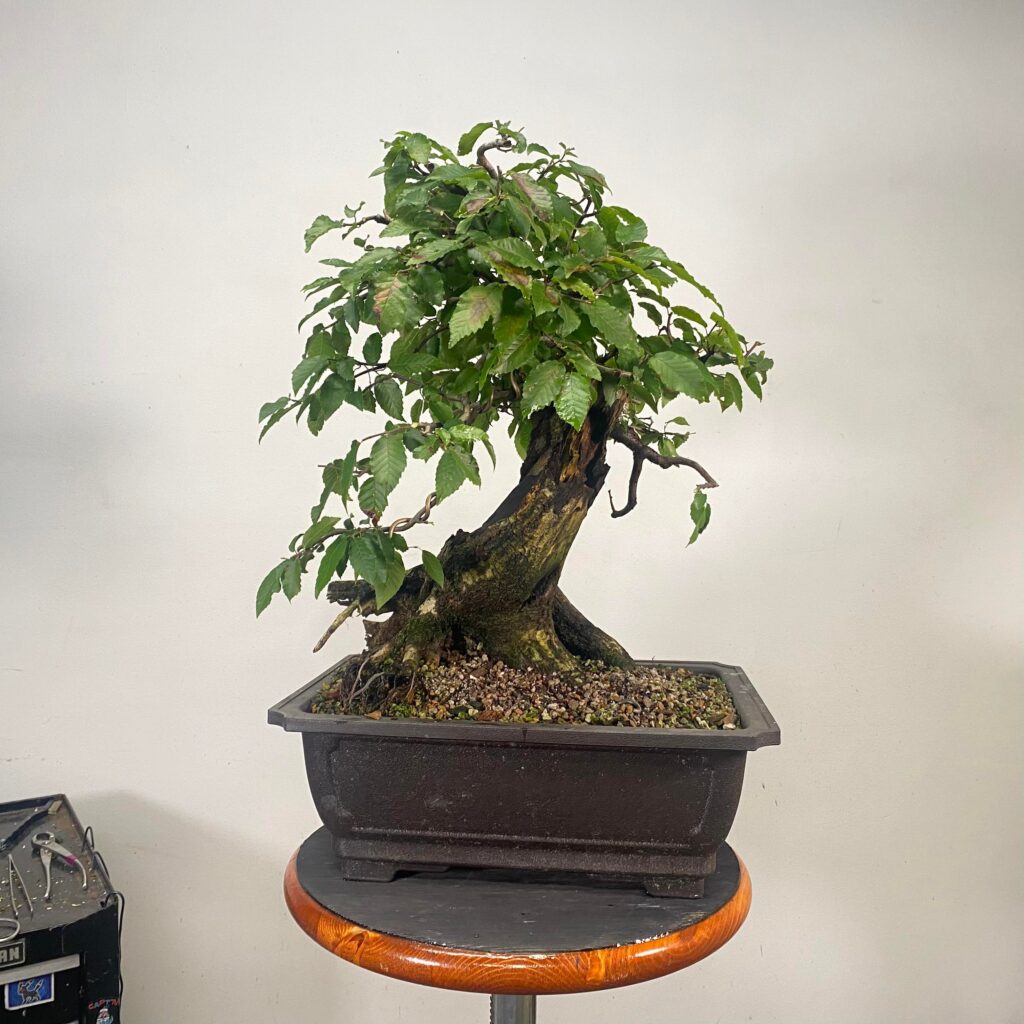
I audibly gasped when I cut back the heavy branch on the right side. Not because I regretted the decision but because I broke the symmetry in the design, and now the tree has a personality. I moved the dropping branch into a position I feel continues the story of the line and helps the viewer’s eye travel around and around.
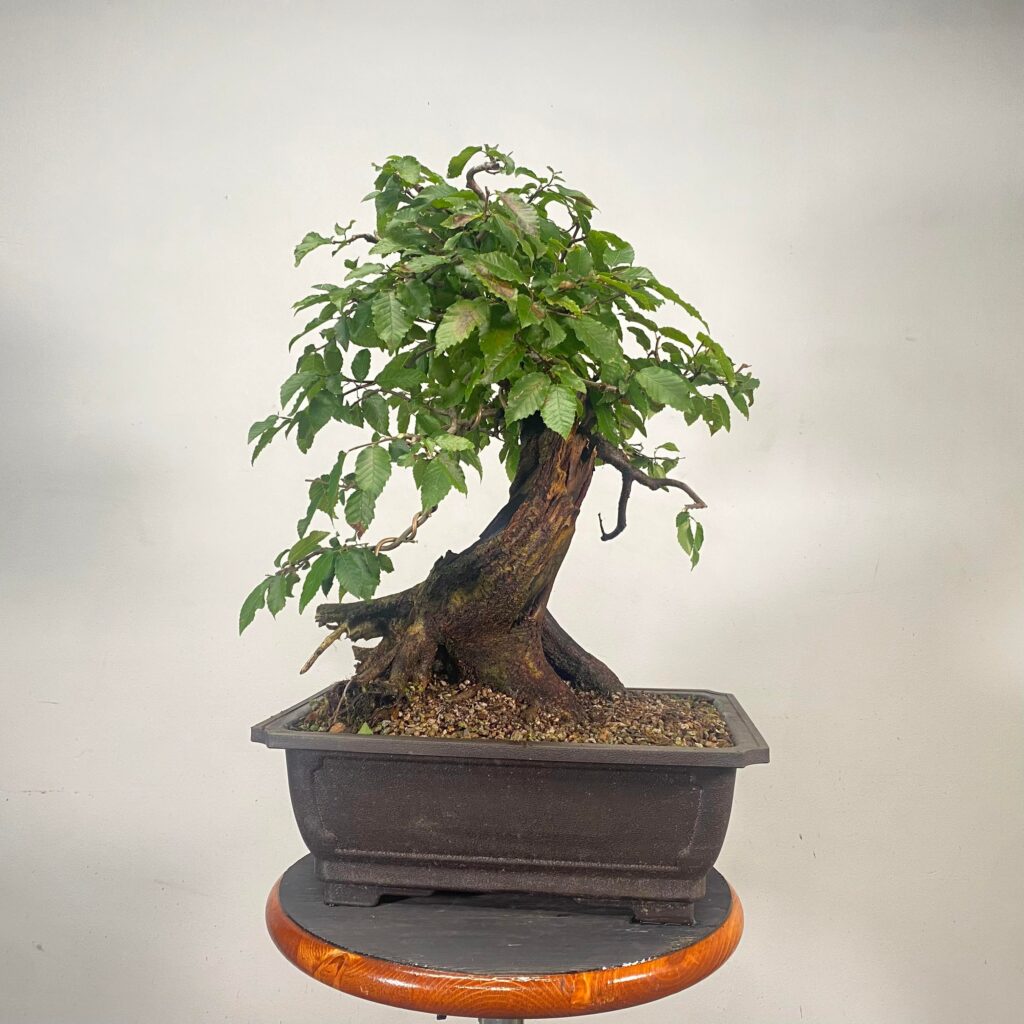
And here is the tree after giving it a good brushing. The deadwood is hard to distinguish from the live veins. I’m okay with this, and I won’t be applying lime sulfur. The deadwood is naturally black, and I like the look of the bark flaking away over time. I will thin out the canopy from here to help the bottom branches catch back up. I think the tree is fascinating for now.
I want to talk about the deadwood on deciduous for a brief moment before I close this one up. Having deadwood features such as jin or shari on deciduous bonsai is considered taboo. Deciduous bonsai are regarded in the traditional Japanese aesthetic to be very feminine. These trees are expected to have slender lines, smooth-barked trunks, and no deadwood features. Deadwood, especially a lot of it, is considered to be a masculine feature. We are in a different time now, and deciduous bonsai can be found all over the place with deadwood features nowadays. Though, I have my theory about deadwood on deciduous, to be honest.
My theory of deadwood is based on my local environment and the experience I have with these trees in nature. Since they have to die back and regrow to survive, this tells a more appropriate story of this species. Bonsai is impermanent but not genuinely transient. We plan to have these trees for a long time, but the tree will change over time. Some things will happen with certain trees that are out of our control. This tree’s deadwood will not last even if I treat it with wood hardeners or diluted super glues. Applying lime sulfur would help with pest control and change the color to white. These trees do not grow out in the open, and sun bleaching would not occur. I hope the tree will continue to be a bonsai for even longer than the deadwood can last, and then the real mochikomi will show. As stated, this will only happen in time, and I can wait.
-Evan
